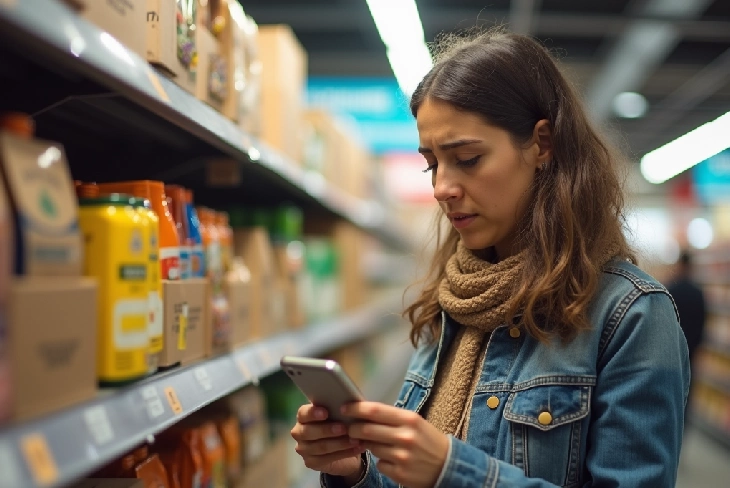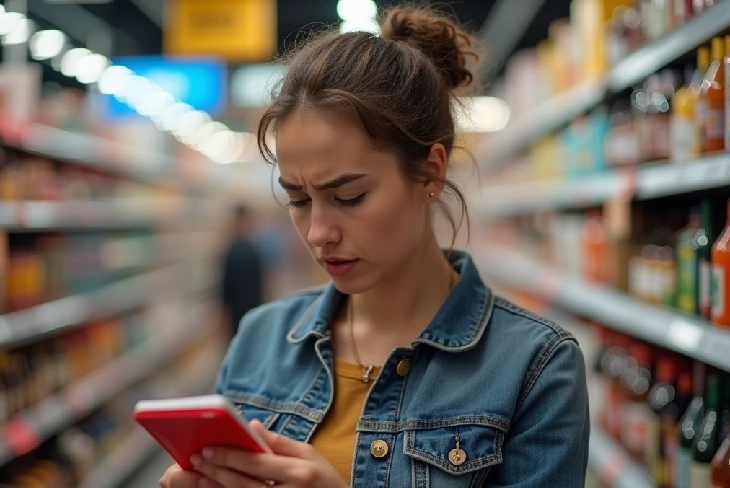Periods of economic uncertainty and downturn lead consumers to tighten their purse strings and adopt more cautious spending habits. When disposable incomes fall and jobs seem less secure, people tend to save more and spend less, especially on non-essential items. This affects overall economic activity and poses challenges for many businesses.
Understanding the psychological and behavioral responses behind changes in consumer spending is key for companies seeking to thrive during volatile times. Adapting marketing, products and pricing to align with evolving preferences enables firms to weather storms and continue growing.
Introduction: Economic Uncertainty and Consumer Behavior
Economic uncertainty refers to an environment where future financial and economic outcomes become more unpredictable. Major factors that contribute to uncertainty include recessions, financial crises, political events, natural disasters and global pandemics.
When the economy’s future seems unclear, both consumer and business confidence drops while perceptions of risk rise. This leads to significant changes in spending habits and purchasing decisions.
Consumer spending accounts for over two-thirds of economic activity in countries like the United States. It includes expenses on essential items like food, housing, healthcare, utilities and insurance. It also covers discretionary purchases such as dining out, entertainment, vacations, vehicle purchases and impulse shopping.
Therefore, any fluctuation in consumer spending habits due to economic factors immediately impacts overall market demand and growth. Understanding behavioral responses and adapting strategies accordingly becomes vital for businesses.

Factors Influencing Spending During Uncertainty
Many interlinked factors shape consumer spending patterns during volatile economic times. Let’s examine some key elements:
Disposable Incomes and Increased Savings
When the economy falters, household incomes and wages stagnate or even decline in some cases. Rising living costs further erode consumers’ disposable incomes. To prepare for potential income loss and unexpected expenses, people tend to save more and spend less.
Precautionary savings directly reduce amounts available for discretionary purchases. Essentials take priority and big-ticket items like vacations and electronics get postponed.
A McKinsey survey during the 2008 recession found that around 49% of respondents were spending less to increase savings.
Consumer Confidence
Perceptions about current and future economic health also influence spending. When people feel pessimistic about their finances and job security, confidence drops.
Lower confidence makes consumers hesitant to invest or spend on non-essential items. This prudent approach further dampens demand and growth.
U.S. consumer confidence dropped over 30 points between October 2019 and April 2020 due to COVID-19 uncertainty.
Employment Stability
Rising unemployment during recessions directly reduces household incomes for many consumers. Even for those not directly impacted, a grim job market outlook fosters pessimism and anxiety. This makes people hang on tightly to their incomes rather than spend freely.
U.S. unemployment rose from under 4% pre-pandemic to nearly 15% by April 2020. Over 20 million jobs were lost between March and April 2020 due to COVID-19 impacts.
External Factors
Developments like inflation, currency fluctuations, interest rate changes, and new regulations also impact uncertainty and spending. For instance, high inflation and rising interest rates mean large purchases require higher monthly payments. This delays or deters big-ticket spending.
Government policies and stimulus packages aim to boost consumer and business sentiment during uncertain times. But their impact takes time to manifest in actual spending.
How Consumers Respond and Adjust Spending
Now let’s examine common tactical spending adjustments consumers make to adapt to uncertain conditions.
Changing Priorities
During uncertainty, consumers move down Maslow’s hierarchy and prioritize essentials while cutting back on discretionary items. For instance, dining out and leisure travel are among the first expenses reduced by cautious spenders.
On the other hand, categories like food staples, insurance and healthcare retain priority status despite income squeezes. Consumers may even switch brands, but will not eliminate these necessary expenditures.

Precautionary Saving
A 2020 survey found that 60% of Americans were spending less so they could increase emergency savings. Saving more provides a safety net against potential job loss or income interruptions during recessions. This precautionary saving directly reduces consumer spending levels.
But it also leads to ‘pent-up demand’. Once economic conditions improve and uncertainty fades, consumers are likely to release savings into deferred purchases and indulgences.
Evolving Value Perceptions
Uncertain conditions make consumers highly value-conscious. Shoppers become more deliberate about prices paid versus benefits received. Retailers relying on discounts and promotions to drive volumes see reduced effectiveness during such times.
Brand trust and quality perceptions also evolve for some categories. For instance, consumers may switch from expensive organic foods to more affordable conventional items. But for categories directly impacting family health or finances, trusted brands become more important.
According to Deloitte’s 2020 survey, products from trusted brands made consumers feel more secure during uncertain times.
Psychological Influences on Spending Habits
Beyond immediate finances, psychology also plays a key role in shaping consumer behavior during volatile periods. Emotions and biases lead consumers to pause discretionary spending while also seeking comfort in essentials.
Impact on Confidence
Rising uncertainty makes people anxious and erodes consumer confidence about current and future financialsafety. This dims spending intent and causes hesitancy for larger investments or indulgences.
Perceived risks also rise across categories, making consumers meticulously evaluate necessity. As a result, discretionary categories witness faster spending declines.
Loss Aversion
Loss aversion makes consumers highly risk-averse during uncertainty. People prefer avoiding losses over making gains. To minimize further ‘losses’, consumers reduce discretionary spending more sharply compared to essentials.
Seeking Stability
Economic volatility also makes people seek more stability and normalization. Essentials like home staples and self-care see continued spending despite market chaos. Routine purchases provide a sense of normalcy amid disorder.
Familiar products and trusted brands also enjoy preference during turbulent times due to their reassuring stability.
Sectoral Impacts of Uncertain Business Environments
While all consumer-facing sectors are impacted by evolving spending habits, some categories witness faster and more severe changes than others.
Retail – Splurges First to Go
As incomes get squeezed, retail is among the first categories to witness consumer pullback. Shoppers make fewer trips, buy fewer items per trip and switch to savings-friendly retailers.
Non-essential categories like fashion, accessories and electronics see the steepest declines. Consumers also gravitate towards more value-oriented brands.
Automotive – Big Purchases Postponed
New vehicle sales are highly sensitive to consumer uncertainty and see significant demand contraction. Consumers delay replacements and new buyers withdraw amidst income squeezes.
Used cars often fare better during leaner times as buyers seek more affordable options.
Travel – Discretionary Trips Cut Back
Travel is among the most discretionary spending categories for most households. During uncertain times, vacations and getaways see drastic cuts of over 50% until stability returns.
Business travel also declines significantly. Consumers pivot budgets towards essentials rather than indulgences.
Food – Seeking Value, Comfort
Food is an essential category where consumers refuse to compromise family nutrition. But dining out, takeaways and alcohol purchases do see sharp declines. Shoppers also migrate towards more affordable grocery items.
Staples, snacks and comfort foods retain priority status for stressed consumers during downturns. These categories see relatively stable demand despite uncertainty.
Real-World Examples of Economic Uncertainty Impacting Spending
History offers us clear examples of how major events creating economic turbulence directly impact consumer behavior.
2008 Financial Crisis
The 2008 recession led to steep job losses and income decline for American households. Consumer spending saw significant drops across categories.
Discretionary sectors like dining out, leisure travel, fashion and electronics were the worst affected. Consumers stuck to bare essentials.
COVID-19 Pandemic
Emergency lockdowns due to COVID-19 severely restricted economic activities. Store closures limited shopping while income losses made consumers highly cautious.
Spending declined across sectors like retail, recreation and transportation services. But essential healthcare and grocery categories saw spikes.
1970s Oil Crisis
Geopolitical conflict in the Middle East disrupted global oil supplies during the 1970s. This led to surging gasoline prices and uncertainty.
Consumers responded by driving less, buying smaller cars and reducing discretionary expenses. Auto sales dropped while public transport use grew.
Key Strategies for Businesses Battling Uncertainty
The examples above clearly illustrate that economic uncertainty directly impacts consumer behavior. Here are some recommendations for businesses seeking to manage altered preferences.
Adopt Targeted Pricing
Consumers become highly price-sensitive during downturns but still expect value. Tactical discounts on non-essential portfolio items help attract cautious shoppers without diluting brand equity.
Stress Value Messaging
Communicating the functional and emotional value offered by their products builds continued consumer relevance for brands. Especially for discretionary portfolio items, value-based messaging counters uncertainty.
Spotlight Accessible Indulgences
Small affordable luxuries like premium snacks, beauty treatments or electronics accessories see continued spending despite uncertainty. Promoting these smaller indulgences taps into this demand.
Launch Value-added Services
Supplementary services allowing consumers to enhance product utility present opportunities. Options like buy-back schemes, enhanced warranties or upgrade programs add value.
Utilize Customer Insights
Analyzing shopper data, search trends and consumer conversations provides real-time understanding of evolving priorities. This allows for nimbly adapting pricing, products, and positioning.
Emphasize Agility
Staying flexible to recalibrate operations, supply chain and inventories in response to demand changes is key. Adaptability also enables capturing emerging opportunities.
Conclusion: Economic Turbulence Requires Consumer Centricity
In closing, periods of economic uncertainty lead people to spend less and save more. This impacts overall consumption demand across discretionary categories.
Businesses relying on stable market conditions struggle with adapting strategies to the new normal. But organizations placing the consumer first can sustain relevance and growth despite external volatility.
Customer insights, empathy, and agility are vital cogs in this adaptive approach. Tracking economic indicators and financial developments also helps anticipate consumer behavior changes.
Understanding human priorities and emotions enables smart recalibration to fulfill evolving needs. This consumer focus builds resilience while uncertainty-proofing business growth.